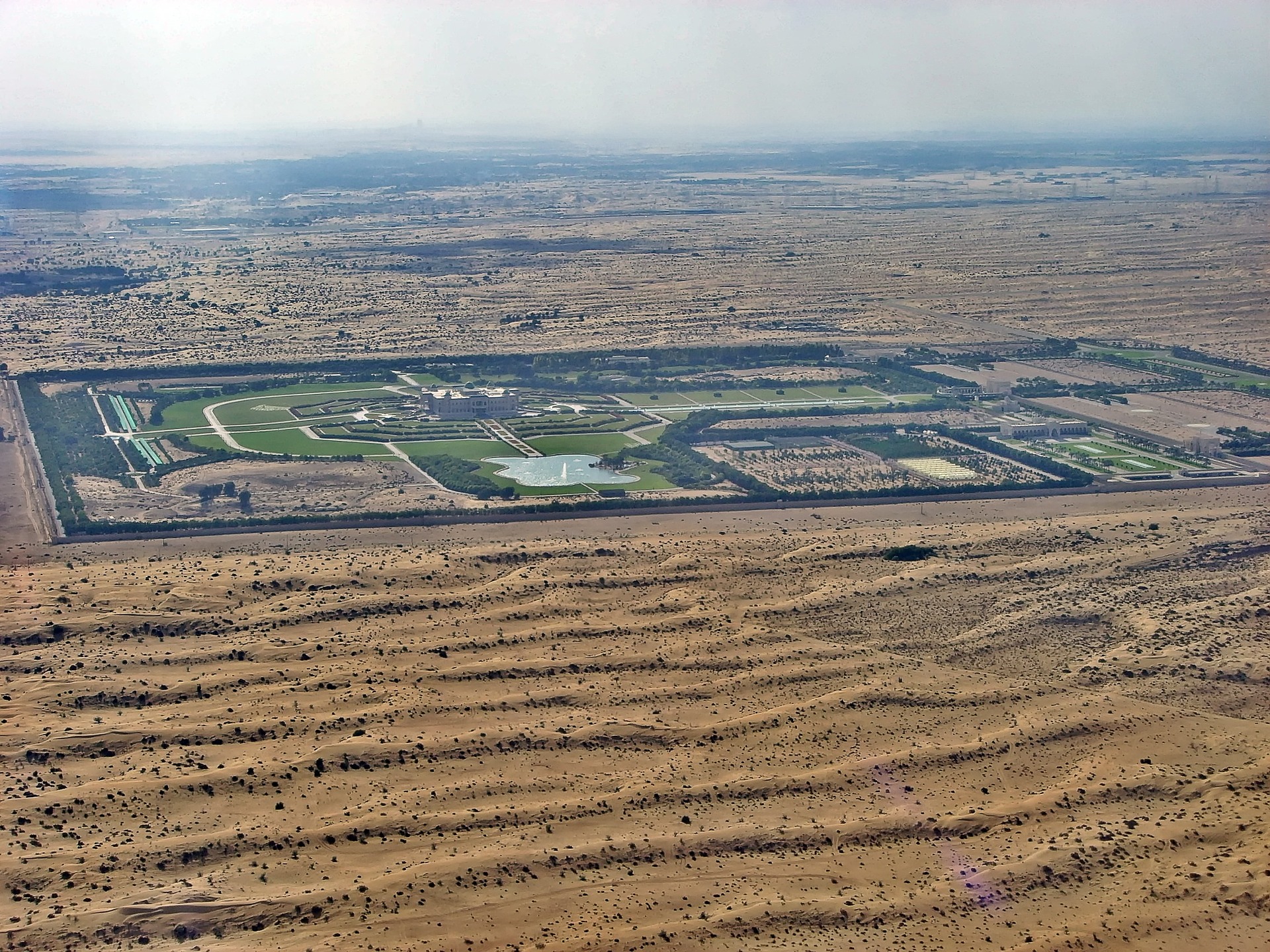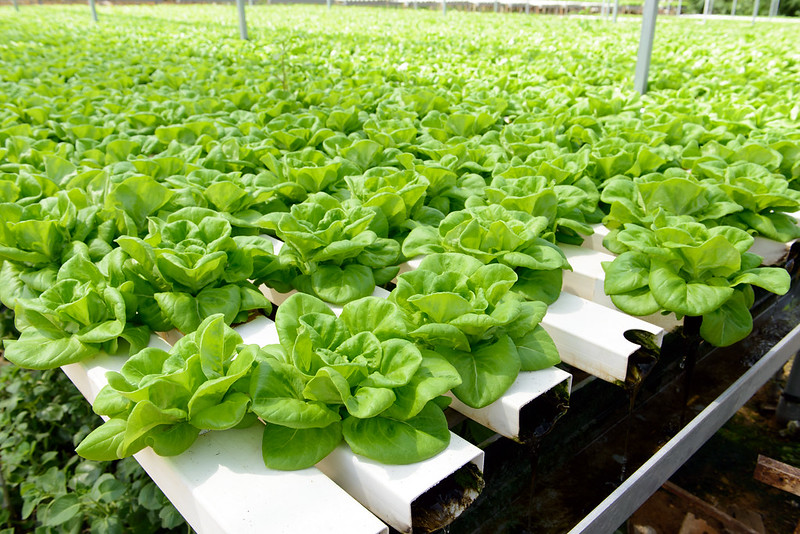This is how the UAE kept food supplies secure through the pandemic
The desert nation started addressing its precarious food security a decade ago – which had an unexpected pay-off during coronavirus lockdown.
H
idden in shipping containers in an unobtrusive district of Abu Dhabi, the stacked trays bursting with salad greens, bathed in red and blue LED lighting, are testimony to a budding agricultural revolution.
Madar Farms is one of the pioneering horticultural companies that, in a nation that imports more than 80% of its food, helped ensure no one in the United Arab Emirates (UAE) went hungry during coronavirus lockdown. Supermarket supply in the Emirates remained uninterrupted – despite the same panic-buying seen around the world – thanks to forward-thinking policies put in place over the last decade that show the knock-on effects of resilience-building. In this case, initiatives on food security born out of climate proved an unexpected boon during an unforeseeable global shock.

UAE has always been highly dependent on imports. Photo by Michael Theis/Flickr
The desert is getting hotter
With less than 1% of its land area cultivatable, the UAE has always been highly dependent on imports. Climate change threatens to worsen an already precarious situation: a predicted 2.5C increase in temperature, 10% rise in humidity and more erratic rainfall by 2050 will make traditional agriculture next to impossible.
February’s inauguration of the Emirates Council for Food Security (ECFS) is just the latest in the country’s efforts to shore up its food supply – which began in the wake of many countries banning food exports during the 2008-9 financial crisis.

Less than 1% of land in UAE is cultivatable.
Vertical farming expands
In 2018, the UAE created a new minister of state for food security charged with developing the country’s agricultural sector. The ministry’s strategy rests significantly on vertical farming facilities like Madar that grow crops hydroponically (without soil), compensating for the country’s lack of arable land.
There were only 50 hydroponic farms in the UAE in 2009; now there are over 1,000. The ECFS is aiming for a future 40,000, raising local production by 100,000 tonnes.
Madar, supported by the Abu Dhabi government, will soon expand into commercial-scale tomato production, joining other companies like Pure Harvest Smart Farms, which operates the country’s first tech-enabled greenhouse. Later this year, Crop One Holdings plans to open the world’s largest vertical farm, a $40 million, 130,000 sq ft facility able to produce 6,000lb of organic fruit and vegetables day.
These minutely controlled environments are essential for a country under extreme water stress: more than 80% of the UAE’s surface and groundwater is withdrawn every year, with agriculture accounting for 60% of use.
The UAE has led the way in methods adapted to such inhospitable conditions. The International Center for Biosaline Agriculture, established in Dubai in 1999, researches crops able to grow in seawater and saline groundwater.
“Thanks to the work being done to harness the benefits of innovation, agriculture is becoming possible and profitable in a country with harsh climatic conditions,” the centre’s director Ismahane Elouafi recently told Reuters.

There were only 50 hydroponic farms in the UAE in 2009, now there are over 1,000. Photo by Aqua Mechanical/ Flickr
Fresh water is drying up
Elouafi stresses that the UAE farmers will have to switch to saline-tolerant crops, such as quinoa, pearl millet and sorghum, in order to maintain yields as fresh water becomes more scarce. The country, in collaboration with South Korea, has also begun farming rice at a facility in Sharjah.
Thanks to its efforts, the country has risen up the Economist Intelligence Unit’s Global Food Security Index, from 31 in 2018 (out of 113 countries) to 21 a year later.
The drive to self-sufficiency
But much remains to be done if it wants to achieve its target of 50% self-sufficiency by the middle of the century. The high ranking rests on the country’s continuing capability to buy in food, something susceptible to fluctuations in comestible and fuel prices. Fairly hard-hit by the coronavirus with a similar per-capita number of cases as the UK, it seems likely the country will also respond with a renewed impetus on its drive towards self-sufficiency.
Singapore, a country with similar constraints on arable land but that ranks No 1 on the Global Food Security Index, is the model to emulate for the UAE. The Middle Eastern country is trying to implement the same kind of fully integrated food security policy that has seen the south-east Asian city-state diligently build its production capacity, while diversifying its imports as much as possible.
The UAE is also working to ensure food resilience in other areas, including investing in livestock complexes, exempting farms from VAT, and educating its citizens about avoiding food waste, which is among the worst in the world.
Its agricultural efforts – bound around major development programmes like Abu Dhabi’s Ghadan 21 Accelerator, which is funding Madar’s expansion, among other things – are a key pillar of economic growth across the country. The UAE government promises the agricultural sector will deliver 16,000 new jobs and $6 billion in annual revenue.
The ideas presented in this article aim to inspire adaptation action – they are the views of the author and do not necessarily reflect those of the Global Center on Adaptation.